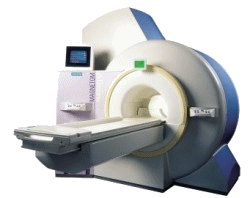 Perhaps there’s something more wonderful than a carefully crafted tool, but I’m not sure what it might be. It’s a monument to the human mind and its capacity for ingenuity. Richard Attenborough may marvel on PBS at the Capstan Monkeys skill at using a tree limb to bang Mussels until they release their grip, but they don’t hold a candle to the infinite array of devices crafted by the hands of man – moving from concepts in the imaginary space of the mind to actual creations used for further creative enterprise. A handle here, a turnscrew there, a notch in the blade wedge to facilitate its removal, an edger to keep things true on course. And there’s always room for improvement [like a motor]. Things of beauty…
Perhaps there’s something more wonderful than a carefully crafted tool, but I’m not sure what it might be. It’s a monument to the human mind and its capacity for ingenuity. Richard Attenborough may marvel on PBS at the Capstan Monkeys skill at using a tree limb to bang Mussels until they release their grip, but they don’t hold a candle to the infinite array of devices crafted by the hands of man – moving from concepts in the imaginary space of the mind to actual creations used for further creative enterprise. A handle here, a turnscrew there, a notch in the blade wedge to facilitate its removal, an edger to keep things true on course. And there’s always room for improvement [like a motor]. Things of beauty…
 These days, we’ve moved from marveling at specialized single-function tools to tools with near infinite potential – tools we can tell what we want them to be. Former tools like phones, cameras, mailboxes, weather maps, calculators, and a gajillion other things become obsolete in the face of a device we can’t even seem to find a name for other than the brand name [which isn’t big enough for the task]. Little thing in my pocket that will do almost anything might be a better label.
These days, we’ve moved from marveling at specialized single-function tools to tools with near infinite potential – tools we can tell what we want them to be. Former tools like phones, cameras, mailboxes, weather maps, calculators, and a gajillion other things become obsolete in the face of a device we can’t even seem to find a name for other than the brand name [which isn’t big enough for the task]. Little thing in my pocket that will do almost anything might be a better label.
 We’ve still got specialized tools, like the MRI that twangs our protons and reads the echo, just one of the new scanners that allows us to look inside the living body at things only visible to our ancestors after death. It’s a wonderful [ugly and noisy] tool and probably vastly over-utilized [because the pictures are so revealing]. In psychiatry, there’s an entire new class of researcher – the neuroimagers – who are head over heels in love with this tool. Altostrata [of Surviving Antidepressants] points us to a fascinating debate about the problems in the glut of neuroimaging studies beginning to flood our literature [The dilemma of weak neuroimaging papers from Daniel Bor]. It appears that this is an example of a set of new tools in search of some applications – tantalizing, but not yet ready for the Center Ring.
We’ve still got specialized tools, like the MRI that twangs our protons and reads the echo, just one of the new scanners that allows us to look inside the living body at things only visible to our ancestors after death. It’s a wonderful [ugly and noisy] tool and probably vastly over-utilized [because the pictures are so revealing]. In psychiatry, there’s an entire new class of researcher – the neuroimagers – who are head over heels in love with this tool. Altostrata [of Surviving Antidepressants] points us to a fascinating debate about the problems in the glut of neuroimaging studies beginning to flood our literature [The dilemma of weak neuroimaging papers from Daniel Bor]. It appears that this is an example of a set of new tools in search of some applications – tantalizing, but not yet ready for the Center Ring.
 Another tool kit vying for a place in the sun is genetics. While we know that some of the classic psychiatric disorders are inherited and the new tools have researchers on the edge of their seats, the enormity of genetic information and our embryonic understanding of genetics at this level have yet to yield much. Like neuroimaging, these borrowed tools are much discussed in excited and reverent voices
Another tool kit vying for a place in the sun is genetics. While we know that some of the classic psychiatric disorders are inherited and the new tools have researchers on the edge of their seats, the enormity of genetic information and our embryonic understanding of genetics at this level have yet to yield much. Like neuroimaging, these borrowed tools are much discussed in excited and reverent voices
In case your wondering what this post is about, it’s about how scientists tend to fall in love with new technologies and new tools, often way before they have any idea what might be done with them. Neuroimaging and the techniques arising from the genome project are good examples. With them, we can look at the brain in living people in ways that we only dreamed of in the past and maybe finally figure out what those strange structures we learned about in neuroanatomy actually do and what part they might play in disease causation. And the genetic sequencing technologies open the door to the basic codes that may explain the long hypothesized heritable factors in some of our most perplexing psychiatric disorders – Schizophrenia, Manic Depressive Illness. Our neuroscientists are in love with these tools of basic science, though that’s all they are right now – tools of basic science. They’re mentioned in every lecture about future horizons but not so prominent in our current landscape. Everyone who cares about them is frustrated that they’ve yet to produce tangible progress.
 Speaking of do-anything tools, you’re looking at one right now – your PC. It’s hard to recognize that the first one was in 1974, and the first usable one [IBM PC] appeared right after the DSM-III. The Internet as we now use it [World Wide Web with HTML] was conceived the same year the DSM-IV was released – a mere eighteen years ago. We don’t even much think of it as a tool anymore. It just is. With it, I can live in a log cabin in the Georgia woods, but download tables of sophisticated data, convert them into multicolored graphs, and post them to the world. Remarkable! But like any tool, it can be abused, misused, a tool of deceit rather than clarity.
Speaking of do-anything tools, you’re looking at one right now – your PC. It’s hard to recognize that the first one was in 1974, and the first usable one [IBM PC] appeared right after the DSM-III. The Internet as we now use it [World Wide Web with HTML] was conceived the same year the DSM-IV was released – a mere eighteen years ago. We don’t even much think of it as a tool anymore. It just is. With it, I can live in a log cabin in the Georgia woods, but download tables of sophisticated data, convert them into multicolored graphs, and post them to the world. Remarkable! But like any tool, it can be abused, misused, a tool of deceit rather than clarity.
The example in my mind are the two papers by Robert Gibbons et al published in the last month [yes those very ones I kept talking about]. The tool angle is the software that allows the authors to crunch large datasets with sophisticated statistical models. I don’t believe the reported results of his analyses. I’ve been beyond vocal about my reasons, but the frustrating part for me is that there’s no way to either dispute or be surprised by his results. Even if his use of mixed model regressions etc. were something I was intimately familiar with, I’d be in the same boat because there’s no data available to analyze – using his methods or any others. He’s in love with his tools, but I’m not because all he communicates are his results and his interpretations of their meaning – interpretations that have implications of major import. I would doubt that there are many, if any, prescribing physicians with an intimate understanding about his methods or his tools. They only have his conclusions or his [in my opinion] irresponsible generalizations on NPR or in the newspapers. He says it’s a closer look at the old data, but from the readers point of view, it might as well be through the Hubble Telescope.
Sorry, the comment form is closed at this time.